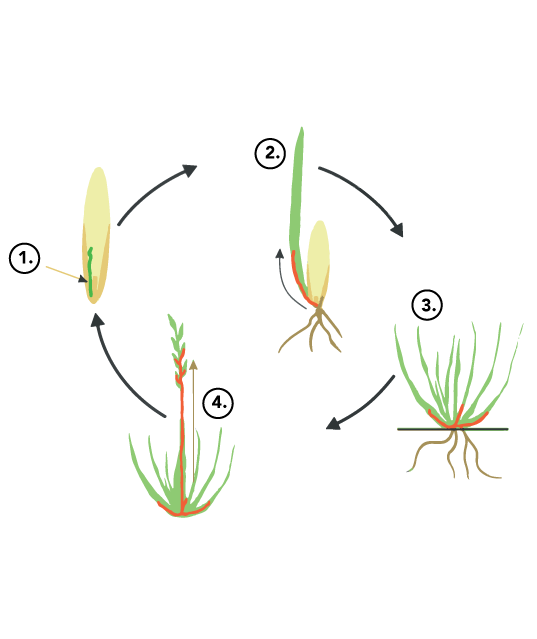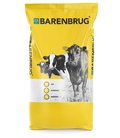The most widely grown forage tall fescue in the United States is Kentucky31, a cultivar released in 1942. The reason for its popularity is its stubborn persistence under extreme climatic conditions. The persistence of Kentucky31 is attributed to the alkaloids produced by a fungal endophyte that grows within the plant. Unfortunately, some of these alkaloids are toxic to livestock and cause deleterious effects on animal performance such as elevated body temperature, decreased weight gains, lameness, lower pregnancy rates and reducedmilk production. Such livestock disorders are commonly refered to as “fescue toxicosis”. Kentucky 31 causes “fescue toxicosis”.
Barenbrug USA researchers examined alkaloid profiles of numerous fescues with endophytes that were collected from around the world. They isolated many endophytes from fescues which lacked alkaloids known to be toxic to livestock. These selected endophytes were inoculated into different soft-leaf tall fescue germplasm. The inoculated fescues were evaluated for their alkaloid profiles and endophyte stability. From this research, Barenbrug was able to pick a beneficial endophyte, “E34”. Plants inoculated with E34 were hybridized with other elite germplasm and used to develop Baroptima +E34. Tested in numerous cutting and grazing trials (Table 4), it has higher forage yields compared to Kentucky 31 and is just as persistent. Research shows it is significantly more persistent under grazing than endophyte-free tall fescue.
- Endophyte is a fungus found in seed
- As the seed germinates, the endophyte grows into the emerging shoot
- It stays in the base of the plant
- In spring, as stems form, the endophyte grows up into new seed





